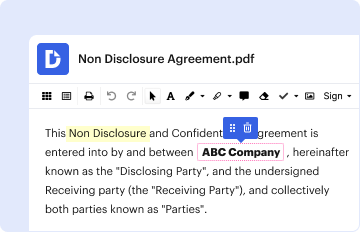Definition and Purpose of a Summons Pretrial
A summons pretrial is a formal notice that informs both plaintiffs and defendants of an upcoming pretrial conference, a key component in civil litigation. This document is issued by the court and serves to ensure all parties are aware of their obligations to appear either in person or through their attorney. The primary aim of the summons is to facilitate discussions pertaining to the case, including opportunities for mediation. By notifying involved parties, the summons helps in avoiding default judgments and possible dismissals by emphasizing the importance of attendance.
The legal basis for the summons pretrial varies by jurisdiction but typically aligns with procedural rules established by local court systems. For instance, in the United States, each state may have its specific rules governing summarization, which governs the notice period, format, and content requirements for a summons pretrial. In summary, this document is critical for maintaining the flow of litigation and ensuring both parties have an opportunity to prepare and resolve disputes amicably.
Steps to Complete the Summons Pretrial
Completing a summons pretrial involves several specific steps, and adhering to these is crucial for fulfilling legal obligations.
- Drafting the Summons: Begin by preparing the document, ensuring it includes crucial identifiers such as the case number, names of the parties involved, and the court's information.
- Setting the Date and Time: Clearly state the date, time, and location for the pretrial conference. These should comply with local court rules, allowing adequate notice for all parties.
- Providing Instructions: Include information on how parties may respond to the summons, whether it's through attendance, submission of documents, or other means mandated by the court.
- Service of Process: Ensure that the summons is properly served to all parties involved. This usually requires delivery via personal service, certified mail, or through an attorney.
- Filing with the Court: After serving the summons, file it with the court to formally record that notification has been given according to procedural requirements.
Following these steps will ensure that the summons pretrial is correctly implemented, which is essential for the underlying case's progression.
Legal Use of the Summons Pretrial
The legal utilization of a summons pretrial is fundamental in civil cases, as it ensures that all legal procedures are followed in accordance with judicial standards.
- Establishing Jurisdiction: The summons verifies the court's jurisdiction over the parties and the subject matter of the case. It provides assurance that defendants are aware of the legal actions being taken against them.
- Promoting Fairness: The document serves to create a level playing field, allowing both plaintiffs and defendants the opportunity to present their perspectives. This is essential for achieving a fair trial.
- Encouraging Settlement: Opportunities for mediation presented within the summons often encourage disputing parties to settle outside of court, saving time and resources.
- Documenting Compliance: The completed summons must be filed in the court records, serving as evidence that all parties have received notice regarding the pretrial conference.
Legal practitioners must understand these aspects to effectively utilize the summons pretrial within the confines of the law and facilitate efficient case management.
Key Elements of the Summons Pretrial
Several critical elements should be present in a summons pretrial to ensure its validity and effectiveness in legal proceedings.
- Court Information: The full name and address of the court where the case is filed must be clearly stated to guide the parties on where to appear.
- Parties Involved: Names and contact information of plaintiffs and defendants should be accurately mentioned to eliminate any confusion during the legal process.
- Instructions: Clear guidelines on how parties should respond to the summons must be included, highlighting the need for attendance and any documents required.
- Date and Time: Specificity regarding when and where the pretrial conference is scheduled is crucial, as it directly impacts attendance.
- Consequences of Non-Attendance: The summons should warn of the potential consequences, such as default judgments or case dismissals, for parties who fail to appear at the conference.
Incorporating these elements will ensure the summons pretrial is comprehensive and adheres to legal standards necessary for court processes.
State-Specific Rules for the Summons Pretrial
State-specific rules play a pivotal role in how summons pretrial documents are utilized and enforced. Each jurisdiction may have unique requirements that impact the process.
- Notification Period: Different states dictate the amount of time that must elapse between the issuance of the summons and the scheduled pretrial conference. Some states may require a notice of 30 days, while others may necessitate shorter or longer periods.
- Service Methods: Laws regarding how the summons must be served can vary significantly. In some jurisdictions, electronic service may be permissible, while others may only allow personal service or certified mail.
- Content Requirements: States may have rules regarding the specific language and structure used in the summons pretrial, affecting its format and the information that must be included.
- Filing Procedures: The process for filing the completed summons with the court can differ, including requirements for additional documentation or specific filing fees.
Understanding these state-specific rules is essential for attorneys and parties involved in litigation to navigate the legal landscape efficiently and ensure compliance with local regulations.



